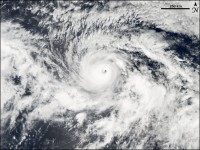A report on the legislation in The New York Times begins:
Private companies and individuals would be able to buy large tracts of federal land, from sagebrush basins to high-peak hiking trails around the West, under the terms of the spending bill passed Friday by a two-vote margin in the House of Representatives.
On the surface, the bill reads like the mundane nip and tuck of federal mining law its authors say it is. But lawyers who have parsed its language say the real beneficiaries could be real estate developers, whose business has become a more potent economic engine in the West than mining.
Key point: “Environmental groups, looking to the database of mining claims created by their colleagues at the Environmental Working Group, say private owners could gain title to 5.7 million acres of federal forests, rocky promontories and grasslands.”
Another: “‘They’d have to be willing to defraud the U.S. government,’ said Carol Raulston, a spokeswoman for the mining industry’s trade group, the National Mining Association.”
Anyone think developers and mining companies wouldn’t be willing to try and defraud the government?
While environmentalists worry about the backyard of ANWR, the developers are stealing the whole house.
